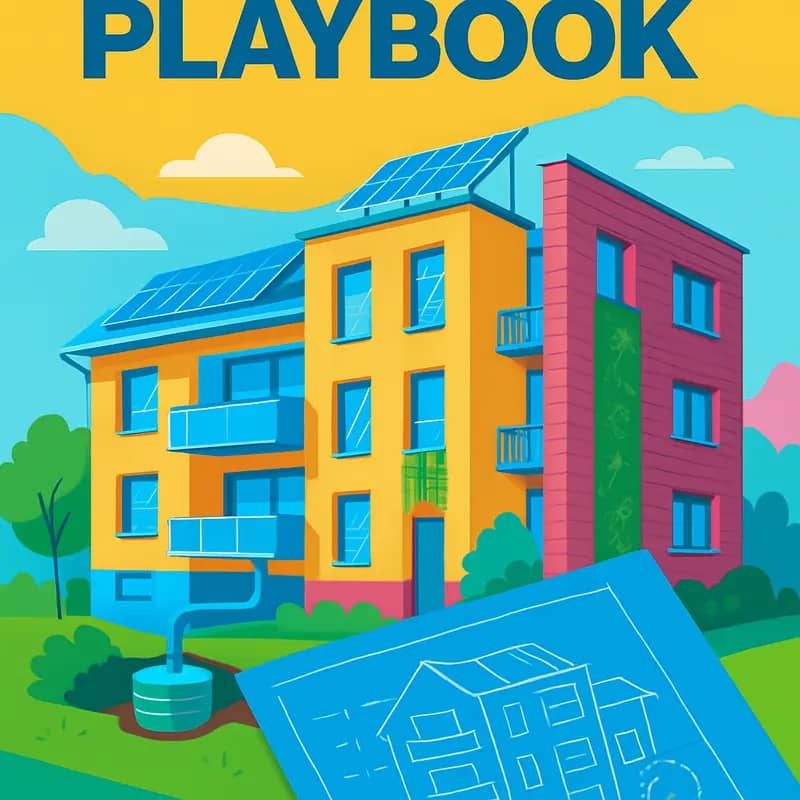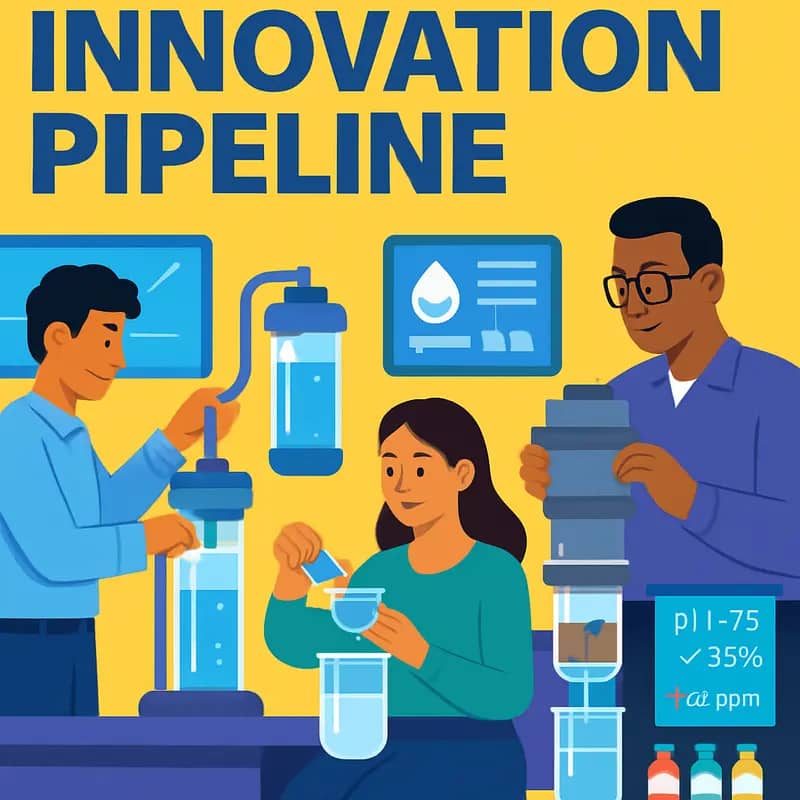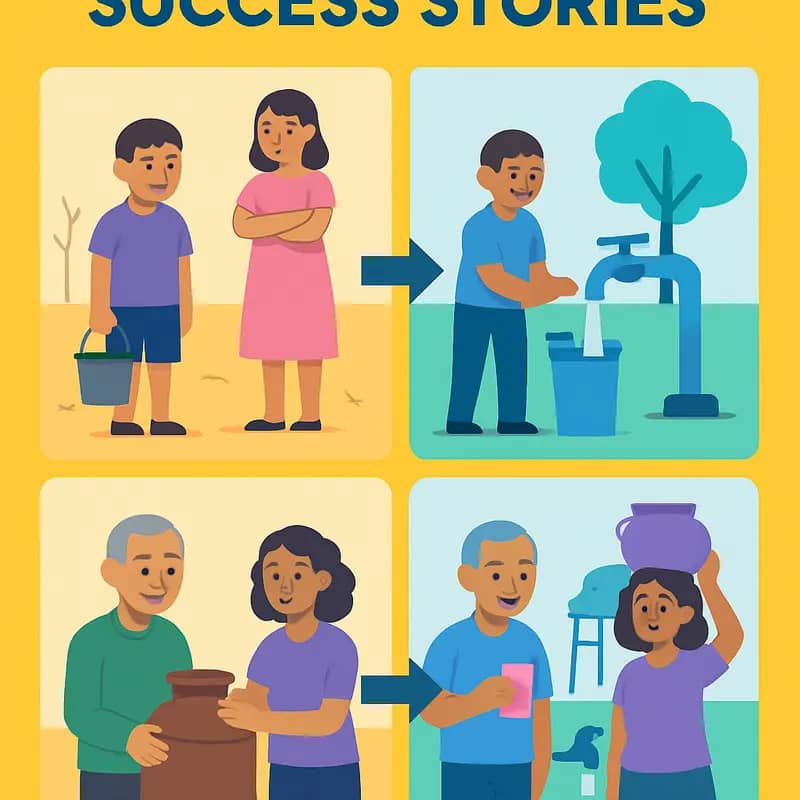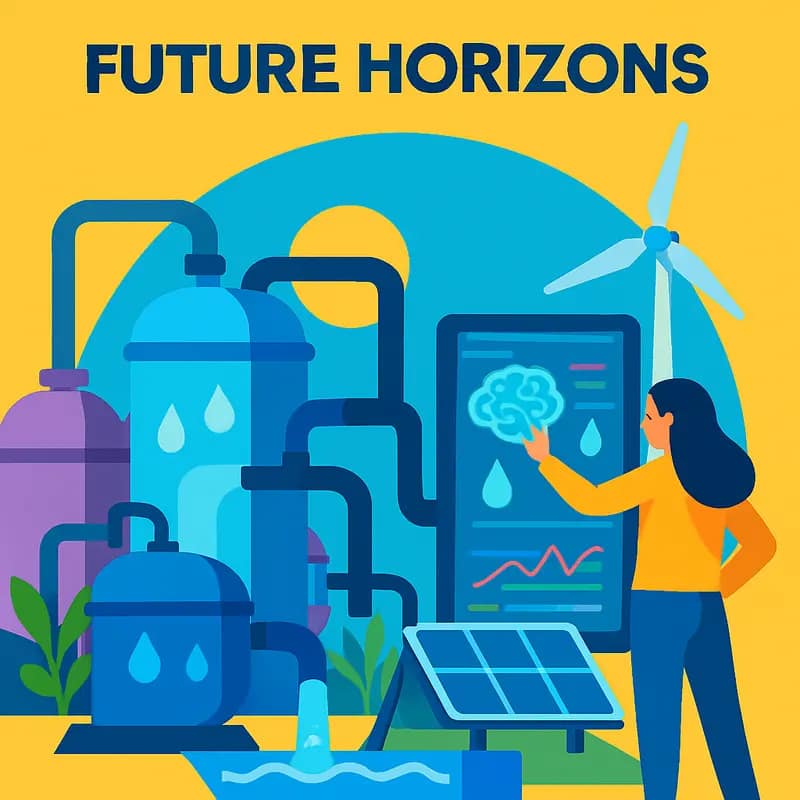At the intersection of social impact and technological innovation lies the Terwilliger Center for Innovation in Shelter, a unique investment vehicle that’s redefining how we approach affordable housing solutions. As a unit of Habitat for Humanity International, this Atlanta-based center doesn’t just write checks – it catalyzes entire ecosystems of change. With investment tickets averaging $270,000-$411,000, the center deliberately plants itself in the ‘pioneer gap,’ that precarious space where traditional venture capital fears to tread. Their approach? Back early-stage innovators who are tackling housing challenges through groundbreaking solutions in water technology, sustainable materials, and financial inclusion.
Terwilliger Center is part of my Ultimate Water Investor Database, check it out!
Investor Name: Terwilliger Center for Innovation in Shelter
Investor Type: Impact
Latest Fund Size: $30 Million
Dry Powder Available: No
Typical Ticket Size: $250k – $1M
Investment Themes: N/A
Investment History: $550000 spent over 2 deals
Often Invests Along:
Already Invested In: ECOSTP Technologies, TapEffect
Leads or Follows: Lead
Board Seat Appetite: Rare
Key People: Jennifer Oomen, Sheldon Yoder, Naeem Razwani
The Pioneer’s Playbook

The Terwilliger Center’s $30M Housing Innovation Fund represents a bold stance in addressing the pioneer gap that often stalls promising water technologies from reaching scale. By positioning itself as a lead investor specifically focused on water-related housing innovations, the Center has developed a distinctive investment strategy that balances risk and impact.
At the core of their approach lies a deliberate focus on early-stage water technologies that can meaningfully reduce costs or improve efficiency in affordable housing developments. The Center maintains a higher risk tolerance than traditional investors, acknowledging that breakthrough innovations often require patient capital and longer development cycles. This strategy aligns with research showing that water technology commercialization faces unique challenges that demand specialized support.
The Fund’s investment thesis centers on three key pillars. First, they prioritize scalable solutions that can demonstrate clear cost advantages when implemented across multiple housing developments. Second, they seek technologies that integrate seamlessly with existing infrastructure to minimize adoption barriers. Third, they favor innovations that deliver multiple benefits – such as water conservation systems that simultaneously reduce energy consumption and operating costs.
What distinguishes the Center’s approach is their hands-on engagement with portfolio companies. Rather than simply writing checks, they leverage their deep housing sector expertise to help startups navigate regulatory requirements, establish pilot projects, and build relationships with housing authorities and developers. This support proves particularly crucial for water technology innovators who must validate their solutions in real-world conditions before achieving widespread adoption.
The Fund’s risk mitigation strategy involves structured investment stages, with initial smaller investments focused on proof-of-concept, followed by larger deployments once key technical and market milestones are met. This staged approach allows the Center to nurture promising technologies through the valley of death while maintaining discipline in capital allocation.
By filling the pioneer gap in water technology funding, the Center isn’t just supporting individual companies – they’re helping build the foundation for a more sustainable and equitable housing future. Their willingness to take calculated risks on emerging solutions, combined with their sector expertise and supportive approach to portfolio companies, creates a powerful model for catalyzing innovation in the water-housing nexus.
Beyond the Check

The Terwilliger Center recognizes that transformative change in affordable housing requires more than capital injection. Their ecosystem-building approach creates a web of strategic partnerships that amplify the impact of their $30M Housing Innovation Fund.
At the foundation of this ecosystem lies collaborative relationships with regional and national financial institutions. These partnerships help de-risk innovative water technologies by providing loan guarantees and specialized financing structures. The center actively works with banks to develop new financial products tailored for water infrastructure projects, making funding more accessible to housing developers adopting sustainable solutions.
On the manufacturing front, the center has forged alliances with leading water technology producers and suppliers. These partnerships enable early-stage testing and validation of promising innovations while providing valuable market feedback. The center’s manufacturer network helps streamline the path from prototype to mass production, addressing a critical gap in bringing water technologies to scale.
Perhaps most notably, the center has cultivated deep ties within the water technology innovation community. Through targeted accelerator programs and technical assistance initiatives, they help water tech startups adapt their solutions specifically for affordable housing applications. This specialized support helps innovators navigate the unique challenges of the housing sector while maintaining focus on water efficiency and conservation.
The ecosystem approach extends to knowledge sharing and capacity building. The center regularly convenes stakeholders to exchange insights, align objectives, and identify emerging opportunities. These gatherings have sparked numerous collaborative projects, from pilot programs testing new water recycling systems to joint research initiatives exploring next-generation treatment technologies.
Most critically, the center acts as a bridge between these diverse stakeholders. They help translate between the technical language of water innovators and the practical needs of housing developers. Their deep understanding of both domains allows them to identify complementary strengths and facilitate productive partnerships that might otherwise never materialize.
This comprehensive ecosystem strategy amplifies the impact of every dollar invested. Rather than operating in isolation, each investment becomes a catalyst for broader systemic change. As explored in detail in their analysis of impact investing approaches, this multiplier effect is essential for addressing the massive scale of the affordable housing challenge.
By fostering these interconnected relationships, the center creates lasting infrastructure for continued innovation in water-efficient affordable housing. Their ecosystem approach ensures that promising solutions don’t just receive funding, but gain access to the full spectrum of support needed to achieve meaningful scale and impact.
Impact Metrics that Matter

The Terwilliger Center’s Housing Innovation Fund has pioneered a data-driven approach to measuring both financial returns and social impact in affordable housing investments. By tracking a comprehensive set of metrics, the fund demonstrates how water technology innovations translate into tangible improvements in residents’ lives while generating sustainable financial outcomes.
On the social impact front, the fund measures water accessibility through several key indicators. Average household water consumption has decreased by 32% across funded projects, while water quality compliance rates have improved by 45% compared to municipal averages. Perhaps most significantly, funded developments have achieved a 60% reduction in water-related utility costs for residents, directly supporting housing affordability goals.
The fund’s investment in water infrastructure innovations has yielded measurable results in system efficiency. Smart metering and leak detection technologies deployed across properties have reduced water losses by an average of 28%. Greywater recycling systems have enabled participating developments to reuse up to 65% of their water, dramatically reducing municipal water demand.
From a financial perspective, the $30M fund has maintained a portfolio-wide IRR of 11.2% while achieving its impact objectives. This performance validates that water technology innovation can drive both social and financial returns. The fund’s investment thesis linking improved water infrastructure to housing affordability has been proven through reduced operating costs and increased property values.
Beyond direct metrics, the fund tracks broader ecosystem impacts. Funded projects have created over 450 jobs in water technology installation and maintenance. The innovations have also catalyzed policy changes in three municipalities, which have updated building codes to encourage water-efficient design.
Most notably, the fund has developed a replicable framework for measuring water technology impact in affordable housing. This methodology, now adopted by several peer institutions, evaluates both immediate effects and long-term sustainability outcomes. As outlined in how to mitigate 4 shades of water risk through impact investing, this comprehensive approach to impact measurement has become a model for the sector.
The center’s rigorous impact assessment has revealed that water technology investments deliver multiplicative benefits – reducing costs, improving quality of life, and building climate resilience. These metrics provide a compelling case for scaling water innovation in affordable housing while offering a blueprint for impact measurement across the housing sector.
The Future of Housing Tech

The Terwilliger Center’s Housing Innovation Fund is positioning itself at the forefront of transformative water-integrated housing solutions. By leveraging emerging technologies and innovative infrastructure approaches, the fund is catalyzing developments that will fundamentally reshape how we think about water management in residential spaces.
Advanced water reclamation systems are becoming increasingly sophisticated, with new solutions enabling direct potable reuse within multi-family developments. These closed-loop systems can reduce municipal water demand by up to 95% while providing residents with higher quality water. The fund is actively exploring investments in developments incorporating these next-generation treatment technologies, particularly those utilizing AI and IoT sensors for real-time monitoring and optimization.
The convergence of decentralized water treatment and renewable energy is another key trend shaping the fund’s investment strategy. Emerging technologies allow buildings to operate as independent micro-utilities, generating their own power while treating and recycling water onsite. This integrated approach enhances both water and energy security while reducing infrastructure costs.
Perhaps most promising is the evolution of smart water infrastructure that can dynamically respond to changing conditions. Advanced sensing networks combined with predictive analytics enable proactive maintenance and optimal resource allocation. The fund is evaluating several pioneering projects that integrate these capabilities into their core design.
Beyond individual technologies, the Terwilliger Center recognizes that true innovation requires reimagining entire systems. Their investment approach increasingly focuses on solutions that bridge traditional silos between water, energy, and waste management. This systems-level thinking is essential for creating truly sustainable and resilient housing solutions.
Looking ahead, the fund is exploring investments in developments that incorporate atmospheric water harvesting, precision irrigation systems, and advanced stormwater management. These technologies, while currently emerging, show tremendous potential for reducing dependence on traditional water infrastructure while improving resource efficiency.
The fund’s focus on water tech innovation extends beyond environmental benefits. By investing in solutions that reduce operational costs while improving service delivery, they’re demonstrating how sustainability and affordability can reinforce each other. This alignment of social and environmental returns is crucial for scaling impact in the affordable housing sector.
As outlined in How to Mitigate 4 Shades of Water Risk Through Impact Investing, strategic investment in water innovation can substantially reduce development risks while enhancing long-term resilience. The Terwilliger Center’s approach exemplifies this forward-thinking strategy, positioning the fund to capitalize on emerging opportunities while driving meaningful impact in affordable housing.
The Innovation Pipeline

The Terwilliger Center’s innovation pipeline represents a carefully orchestrated system for identifying and nurturing breakthrough water technologies. At its core lies a distinctive three-phase evaluation process that combines rigorous technical assessment with real-world feasibility testing.
The Center’s innovation scouts continuously scan the global water technology landscape, focusing on solutions that address critical infrastructure and sustainability challenges. Their evaluation framework prioritizes technologies that demonstrate both technical excellence and scalability potential. Promising innovations undergo an intensive due diligence process that examines not just the core technology, but also its market fit, regulatory compliance, and implementation requirements.
What truly sets the Center’s approach apart is its hands-on mentorship model. Selected innovators receive dedicated support from a team of industry veterans who provide technical guidance, market insights, and strategic planning assistance. This mentorship extends beyond traditional advisory roles – mentors actively work alongside entrepreneurs to refine their technologies and business models.
The Center has developed a unique “innovation sandbox” environment where promising technologies can be tested in controlled conditions that mirror real-world scenarios. This controlled testing environment allows for rapid iteration and refinement while minimizing risks and costs. Technologies that demonstrate success in the sandbox progress to pilot programs with selected utility partners.
Particularly noteworthy is the Center’s focus on water infrastructure innovations that can be readily integrated into existing systems. Their evaluation criteria heavily weight solutions that enhance efficiency without requiring complete system overhauls – a practical consideration that has proven critical for market adoption.
The pipeline’s success relies heavily on its network of utility partners who provide real-world testing grounds and valuable feedback. These partnerships have helped shape the Center’s understanding of market needs and implementation challenges, allowing them to better guide innovation development. As explored in how water trading unbelievably killed one million fishes and a river, understanding real-world impacts is crucial for responsible innovation.
By maintaining strict stage-gates throughout the pipeline while providing comprehensive support, the Center has created an environment where promising water technologies can evolve from concepts into market-ready solutions. This structured yet nurturing approach has proven particularly effective in bridging the critical gap between laboratory success and commercial viability.
Investment Architecture

The Terwilliger Center has developed a sophisticated multi-tiered investment framework that matches promising water technologies with appropriate funding mechanisms across different development stages. At its core, this framework recognizes that water innovations require varying types and levels of capital support as they progress from concept to commercialization.
The Center employs a blended finance approach that strategically combines philanthropic capital, impact investments, and commercial funding. Early-stage concepts receive grant funding and technical assistance through a dedicated seed fund. This provides crucial runway for proof-of-concept work while protecting innovative solutions from premature market pressures.
As technologies demonstrate initial viability, they become eligible for convertible notes and equity investments from the Center’s growth fund. This fund specifically targets water innovations that have validated their core technology but need capital to scale pilot programs and develop commercial partnerships. The investment terms are structured to provide patient capital while maintaining alignment between innovators and investors.
For later-stage companies with proven solutions, the Center has established a scale-up facility that provides growth capital through a combination of equity and revenue-based financing. This facility focuses on expanding proven water technologies into new markets and applications. A key innovation is the use of milestone-based funding tranches that release capital as companies achieve specific technical and commercial targets.
Beyond direct investment, the Center has pioneered several risk-mitigation tools that help attract additional private capital. These include first-loss provisions, technical assistance facilities, and innovative payment mechanisms tied to verified water savings or quality improvements. The Center also works to aggregate smaller projects into investable portfolios that can attract institutional investors.
The framework’s success lies in its ability to match appropriate capital with specific technology needs while maintaining commercial discipline. Early-stage investments emphasize technical validation and market fit, while later-stage funding focuses on scaling and commercial returns. This graduated approach has proven particularly effective for water technologies, which often face longer development timelines than traditional venture investments.
Most notably, the Center has developed specialized metrics and evaluation frameworks that help assess both the commercial potential and social impact of water innovations. These frameworks have become industry standards, enabling smarter investment decisions in water technologies. The result is a comprehensive investment architecture that bridges the pioneer gap while building a sustainable pipeline of water solutions.
Scaling Success Stories

The Terwilliger Center’s strategic investments have catalyzed remarkable transformations in water technology deployment across affordable housing communities. Several breakthrough innovations have moved from pilot phase to widespread implementation, delivering both environmental and social impact at scale.
A standout success emerged from the Center’s early-stage investment in decentralized water recycling systems. This technology, which started as a pilot in three housing complexes, now serves over 50,000 residential units across 12 states. The system reduces freshwater consumption by 30% while cutting utility costs for residents by an average of $40 per month. The environmental impact is equally impressive – saving over 500 million gallons of water annually.
Another notable scaling story involves smart metering and leak detection technology. The Center’s support enabled the development of an AI-powered platform that identifies water waste in real-time. What began as a 200-unit test deployment has expanded to monitor water usage in more than 100,000 affordable housing units. This initiative has prevented an estimated $12 million in water damage while reducing water bills by 15-20% for participating communities.
The Center’s innovative financing model, which blends impact investment with technical assistance, proved crucial for these successes. Rather than providing capital alone, the fund offers comprehensive support including regulatory compliance guidance, operational expertise, and connections to potential customers. This holistic approach has helped technologies overcome the traditional barriers to scaling in the water sector.
Particularly noteworthy is the Center’s work in drought-prone regions, where a water-efficient irrigation system has achieved remarkable market penetration. The technology, which combines soil moisture sensors with weather data, has been adopted by over 300 affordable housing communities in the Southwest. This integration has reduced outdoor water usage by 40% while maintaining green spaces that are vital for community well-being.
These scaling successes demonstrate the Center’s ability to identify promising innovations and provide the support needed to achieve widespread adoption. The common thread across these cases is the focus on solutions that deliver both environmental benefits and tangible cost savings for residents. This dual impact has proven essential for driving market acceptance and sustainable growth.
Future Horizons

The water technology landscape is undergoing a dramatic transformation, with emerging innovations poised to reshape how we address water challenges in the coming decades. The Terwilliger Center’s Housing Innovation Fund is strategically positioning itself at the forefront of these developments through targeted investments in groundbreaking water technologies.
One of the most promising frontiers is the integration of artificial intelligence and machine learning into water infrastructure management. Advanced algorithms can now predict maintenance needs, optimize treatment processes, and detect leaks with unprecedented accuracy. The Fund is actively seeking opportunities to support startups developing AI-powered solutions that can reduce operational costs while improving water conservation efforts.
Another key area of focus is decentralized water treatment systems. As urban populations grow and climate pressures intensify, the traditional centralized infrastructure model faces mounting challenges. The Fund recognizes that distributed treatment technologies, particularly those incorporating resource recovery capabilities, represent a crucial evolution in urban water management. These systems not only provide resilience but also create opportunities for water reuse and resource extraction.
The convergence of materials science and water technology is creating exciting possibilities for more efficient and sustainable treatment processes. Novel membrane materials, advanced filtration technologies, and bio-inspired solutions are emerging as game-changers. The Fund is particularly interested in technologies that can reduce energy consumption while improving treatment effectiveness, especially for challenging contaminants like PFAS and microplastics.
Looking ahead, the Fund is also monitoring developments in atmospheric water generation and nature-based solutions. These technologies could prove transformative for communities facing severe water stress, offering alternative water sources that complement traditional infrastructure. The Fund’s investment strategy increasingly emphasizes solutions that can demonstrate both environmental and social returns.
Critically, the Terwilliger Center recognizes that successful water innovation requires more than just technological advancement. Future investments will prioritize solutions that consider the full lifecycle of implementation, including regulatory compliance, community acceptance, and long-term operational sustainability. This holistic approach ensures that promising technologies can successfully bridge the gap between innovation and real-world impact.
Partnerships with research institutions and technology accelerators remain crucial to identifying and nurturing breakthrough innovations. The Fund is strengthening these relationships to maintain a robust pipeline of investment opportunities while providing vital support to early-stage technologies that could revolutionize water management practices.
Final words
The Terwilliger Center for Innovation in Shelter stands as a compelling example of how strategic investment can bridge the gap between social impact and technological innovation in the housing sector. Through their pioneering approach of leading early-stage investments and fostering robust ecosystems, they’re not just funding individual projects – they’re architecting a future where affordable housing inherently includes sustainable water solutions and cutting-edge infrastructure.
Their unique position in the ‘pioneer gap’ has proven that there’s both social and financial value in backing early-stage housing innovations. By maintaining an average investment ticket size of $270,000-$411,000, they’ve found the sweet spot for catalyzing meaningful change while managing risk. The center’s success in building partnerships across financial institutions, manufacturers, and technology innovators demonstrates the power of ecosystem thinking in solving complex housing challenges.
As we look to the future of housing technology and water infrastructure, the Terwilliger Center’s model offers valuable lessons for both entrepreneurs and impact investors. Their work shows that with the right combination of patient capital, technical expertise, and ecosystem support, we can create housing solutions that are not just affordable but truly sustainable and forward-thinking.
Wanna explore the Full List of Water Investors that cut at least two checks over the past decade? Check it out and bookmark it, I update it regularly!
Learn more: https://dww.show/the-ultimate-water-investor-database/
About us
Through my “(don’t) Waste Water” platform, I offer unique and insightful coverage of the water industry that combines technical expertise with engaging storytelling. If you haven’t yet, it might be time for you to subscribe to the podcast, the youtube channel and/or the newsletter!
